It Happened on Broadway
It Happened on Broadway
An Oral History of the Great White Way
Myrna Katz Frommer and Harvey Frommer
TAYLOR TRADE PUBLISHING
Lanham Boulder New York London
Published by Taylor Trade Publishing
An imprint of The Rowman & Littlefield Publishing Group, Inc.
4501 Forbes Boulevard, Suite 200, Lanham, Maryland 20706
www.rowman.com
Unit A, Whitacre Mews, 2634 Stannery Street, London SE11 4AB, United Kingdom
Distributed by NATIONAL BOOK NETWORK
Copyright 2015 by Myrna Katz Frommer and Harvey Frommer
All rights reserved . No part of this book may be reproduced in any form or by any electronic or mechanical means, including information storage and retrieval systems, without written permission from the publisher, except by a reviewer who may quote passages in a review.
British Library Cataloguing in Publication Information Available
Library of Congress Cataloging-in-Publication Data
It happened on Broadway : an oral history of the Great White Way / [compiled by] Myrna Katz Frommer and Harvey Frommer.
pages cm
ISBN 978-1-58979-916-5 (pbk. : alk. paper) ISBN 978-1-58979-917-2 (electronic)
1. TheaterNew York (State)New YorkHistory20th century. 2. EntertainersNew York (State)New YorkInterviews. 3. TheaterNew York (State)New YorkInterviews. 4. Broadway (New York, N.Y.)Biography. I. Frommer, Myrna, compiler. II. Frommer, Harvey, compiler.
PN2277.N5I8 2015
792.09747'1dc23
2014034403
 The paper used in this publication meets the minimum requirements of American National Standard for Information SciencesPermanence of Paper for Printed Library Materials, ANSI/NISO Z39.48-1992.
The paper used in this publication meets the minimum requirements of American National Standard for Information SciencesPermanence of Paper for Printed Library Materials, ANSI/NISO Z39.48-1992.
Printed in the United States of America
To the gifted and generous members of the Broadway community.
Thanks for your memories .
And to the memory of Fred Golden, a most gifted, generous, and also gallant man who became, during the time we researched and wrote this book, our counsel and friend.
Introduction
T hese pages tell the story of American theater at its quintessence, in a particular place, at a particular time. The place: a collection of side streets on the west side of midtown Manhattan where Broadway and Seventh Avenue converge, fondly referred to as The Great White Way. The time: a period that begins at the end of World War II and ends at the beginning of the twenty-first century.
In this place, during this time, in theaters like the Lunt-Fontanne, the Royale, the Broadhurst, the Gershwin, the Richard Rodgers, the St. James, the Imperial, and the Shubert, musicals with strong books and believable characters were drawing crowds of enchanted theater-goers while plays by Eugene ONeill, Arthur Miller, and Tennessee Williams were ushering in a new standard for singularly American dramatic literature.
At the same time, the moods and issues that were engaging the nation were being played out on a Broadway that was blossoming in the victorious euphoria of the postwar period but also concerned with Cold War hysteria and blacklisting, societal disruptions and protests, needs to embrace the ideals of a more inclusive society, the toll being exacted on so many members of the Broadway community by the AIDS epidemic.
Such considerations appear throughout this multiple memoir where more than a hundred Broadway babies, bards, balladeers, and boulevardiers, eternally smitten by the love of theater, recall the journey propelled by that love. They bring the reader through the stage door into dressing rooms and rehearsal halls, flies and projection booths, around pianos in angels living rooms and conference tables in producers offices as they relive auditions, readings, rehearsals, on-the-road tryouts, openings, runs, closings, and the lived-for moments of glory under the bright lights, center stage.
There is Carol Channing, recounting the moment she realized the safest place for her would be center stage. There is Robert Whitehead thinking back to the time he convinced Ethel Waters to take the role of Berenice Saide Brown in The Member of the Wedding and the time Judith Anderson convinced him to give her the role of the nurse their second time around with Medea . There is John Raitt recalling how he carelessly unfolded a piece of paper that turned out to be the sheet music for the Soliloquy from Carousel . There is Cy Feuer reminiscing about the time Frank Loesser snatched a line of Abe Burrows dialogue for The Oldest Established Permanent Floating Crap Game in New York for Guys and Dolls . There is Mary Rodgers remembering the many times shed walk past the living room doorway and hear her father, at the piano, trying out a new gorgeous melody, Kim Hunter reliving her onstage mishaps with Marlon Brando in A Streetcar Named Desire , Gwen Verdon recalling her first dance encounter with Bob Fosse when he worked her through the steps of Whatever Lola Wants in Damn Yankees , Joel Grey describing how he found his way into the diabolical character of the emcee in Cabaret , Len Cariou recounting how he lost his appetite when he sat down to lunch one day with a script from Stephen Sondheim that turned out to be Sweeney Todd , and Charles Durning remembering the way George C. Scott would tell him Ill see you in reality as they stepped onstage in Inherit the Wind .
It is these firsthand recollections that distinguish this book, make it worthy of a Broadway that still stands for the miracle, the dreamed-of, longed-for destination of the most gifted among us. As the bard said, All the worlds a stage. True, but there is only one Broadway.
Whos Who in the Cast
Since this book was originally published, many changes have taken place with the authors, many changes have taken place on Broadway. The story of this book, however, remains told by many talented people in a range of distinctive voices. Sadly, in the years since publication, a number of our members of the Cast of Characters have died.
But their memories and perceptions remain, unaltered and as fresh as they were in the original telling. What follows is a time capsule, an oral history of a time and place of special happenings in American culture.
BILLIE ALLEN has appeared in On the Town , Mambas Daughters , and A Raisin in the Sun. She is a director and writer as well as an actress, and the wife of Luther Henderson.
MICHAEL MICKEY ALPERT has represented hundreds of shows in his more than four decades of experience as a Broadway press agent.
EMANUEL MANNY AZENBERG has produced every Neil Simon play since 1972. Among his other production credits are The Lion in Winter , Mark Twain Tonight! , Scapino , Aint Misbehavin , Master Harold and the Boys , Joe Egg , Long Days Journey into Night , A Moon for the Misbegotten , Sunday in the Park with George , Molly Sweeney , and Side Show.
CLIVE BARNES is the drama critic of the New York Post.
MARY ELLIN BARRETT , the daughter of Irving Berlin, is the author of A Daughters Memoir.
NORMAN BEIM is an actor and playwright. He appeared on Broadway in the original production of Inherit the Wind.
MICHEL BELL , formerly a member of the vocal group the Fifth Dimension, spent many years on the opera and concert circuit. He made his Broadway debut in the 1994 revival of Showboat .
PRICE BERKLEY is the publisher of the Theatrical Index , the authoritative publication about Broadway, off-Broadway, regional, and West End shows.
THEODORE BIKEL , a major personality on the stage, screen, and concert circuit, made his Broadway debut as Captain von Trapp in The Sound of Music . He went on to starring Broadway roles in Zorba and Fiddler on the Roof.
BETTY BUCKLEY , star of stage, screen, and television, made her Broadway debut as Martha Jefferson in 1776 . Among her other Broadway roles are Catherine in Pippin , Grizabella in Cats , and Norma Desmond in Sunset Boulevard .
Next page
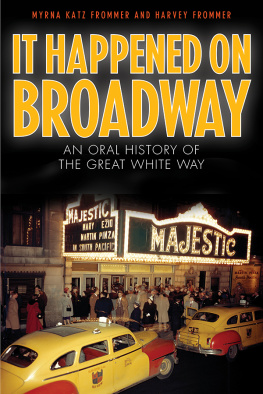

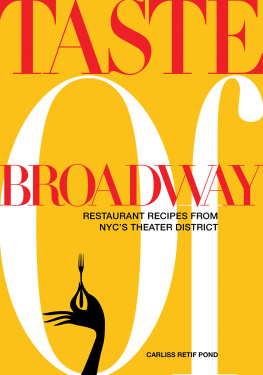
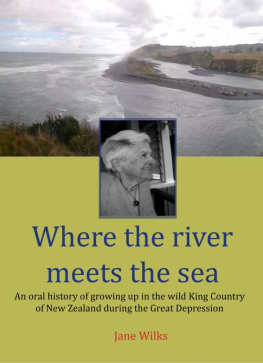
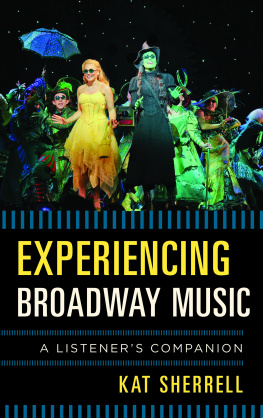
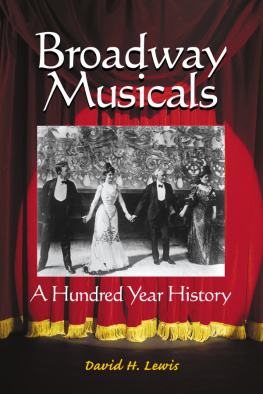
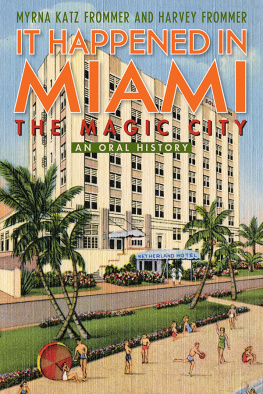
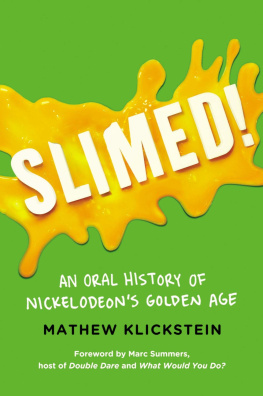
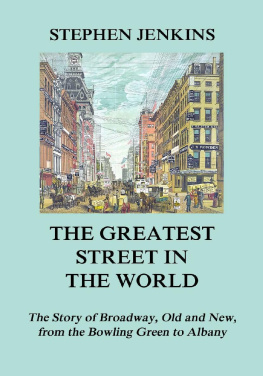

 The paper used in this publication meets the minimum requirements of American National Standard for Information SciencesPermanence of Paper for Printed Library Materials, ANSI/NISO Z39.48-1992.
The paper used in this publication meets the minimum requirements of American National Standard for Information SciencesPermanence of Paper for Printed Library Materials, ANSI/NISO Z39.48-1992.